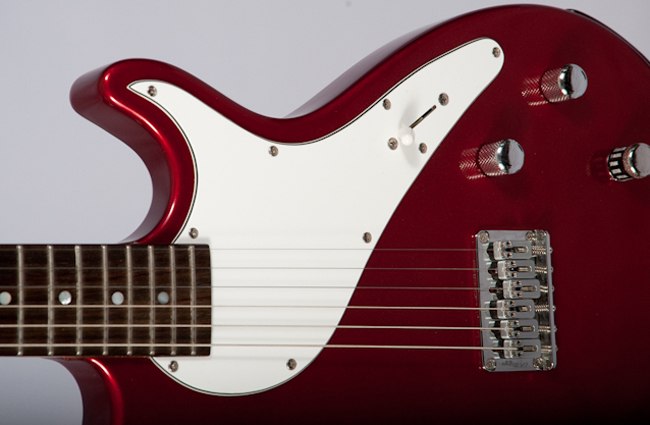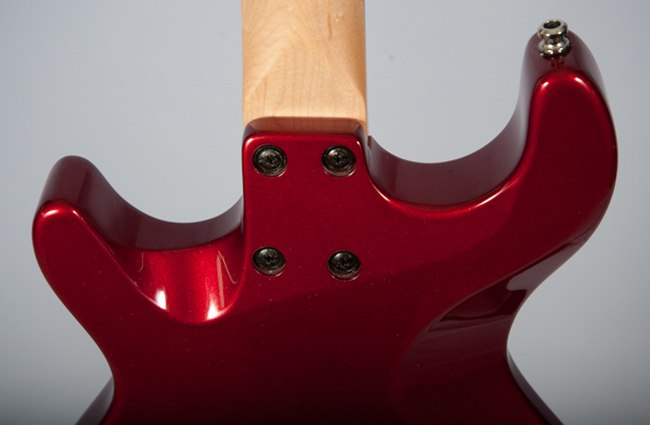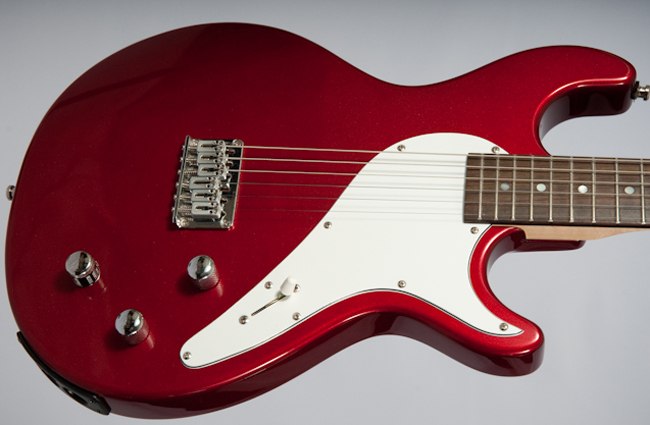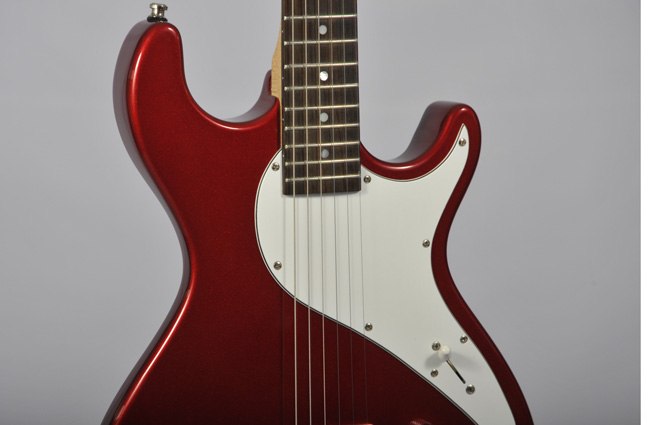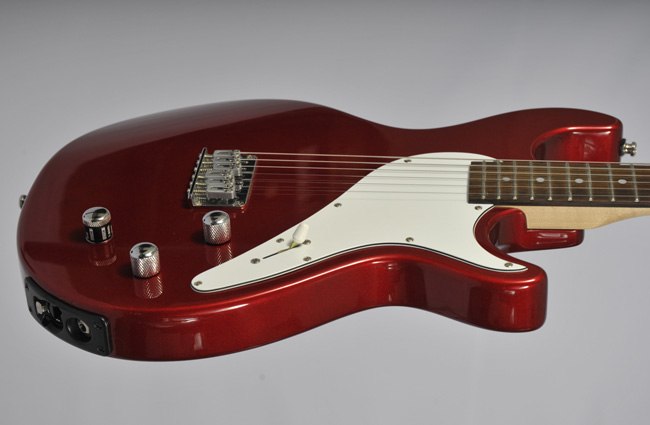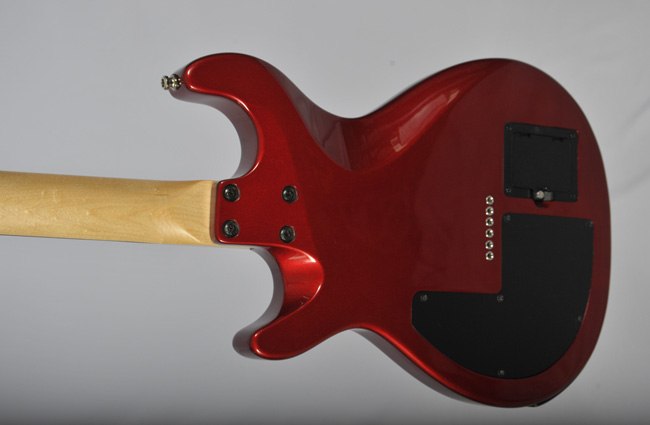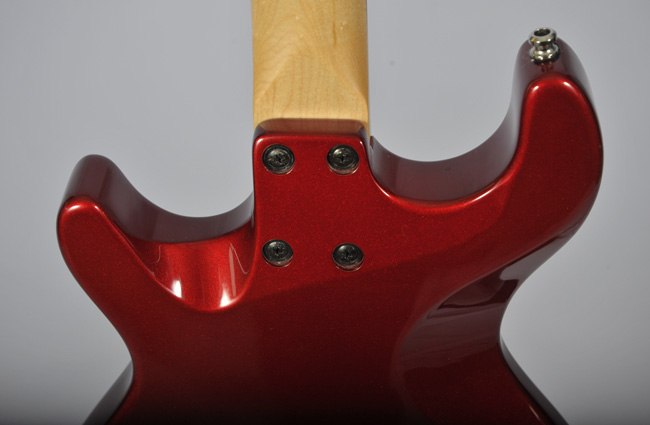Line 6 Variax 500
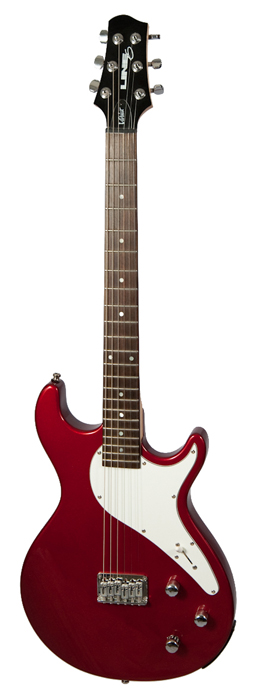 Year: 2003?
Year: 2003?
Finish: Metallic Red
Origin: Korea
Acquired: 2007
Mods: Schaller straplocks
Still owned: No
The Story:
It’s hard not to buy into the dream of one guitar that does everything. That’s what the Variax promises: digital-modeled sounds of famous vintage and rare guitars, from Strats and Pauls to Rickenbackers, Gretches, a few acoustics, even a banjo and an electric sitar. Just turn the knob and select your sound. That’s a lot to promise.
I figured if anybody could pull it off, it would be Line 6. I am a huge fan of Line 6’s POD amp-simulation processors and have used them on stage and in the studio for many years now. (I actually sold a vintage Fender Blender pedal for $300 to get my first POD for the same price.) I used a POD xt Live when I was with Fast Times, and it came with an Ethernet jack marked “Variax” — meaning the Line 6 modeling guitar had a custom, direct connection to the Line 6 modeling amp. After I was having trouble with the wiring in my apartment causing hum and buzz on the early Palette-Swap Ninja recordings, I figured an all-digital signal path was the answer to the problem.
I was a few years late to the party, but that was actually good — I had more options with the Variax 300, 500, 600, and 700 all on the market. The 500 was actually the original model, so I was able to find them used. I liked the look of the 300, but it was made of agathis — not a wood I want to support. The 600 had a V-shaped neck, so that was out, and the 700 was simply too pricey for me. Also, I further limited my options with my standard “no black, no sunburst” rule, leaving just metallic red. But after searching, I did find one on eBay for a few hundred bucks.
Curiously, while many other guitars can be dated by their serial numbers, the Variax series is not one of them. 2003 is my best guess for manufacture date. The neck is just a little big for my tastes — not quite as slim as a C-shaped Fender or 60s Gibson, but not nearly as clubby as a U-shaped Fender or 50s Gibson. I keep saying I’m going to replace it with a Warmoth, but I never have; I’m actually more interested in getting some 500 guts and putting them into a fully custom Warmoth replacement neck and body.
The main reason I don’t want to mess with the Variax is that it’s a workhorse that works wonderfully. Since I got it, it’s been the main guitar on all the Palette-Swap Ninja songs; it’s a dream for that, since I’m always trying to copy someone else’s tone. With a little research, I can approximate the original song’s guitar and amp with the Variax 500 and the POD HD 500. And yes, it offers an utterly clean digital signal this way, with no hum at all. The Variax also works through a standard 1/4″ jack to go direct into any amp, but you need to use a powered stombox or six AA batteries to do that. Frankly, the POD with a Variax cable is less hassle.
Funny side story: I upgraded from my trusty POD xt Live to an HD 500 because I thought the Variax jack was fried. It’s a powered jack, and one night at a gig I accidentally plugged a 1/4″ cable into the POD’s Variax jack. It started smoking, so when my Variax cable didn’t work next time I tried it, I figured I’d damaged it. I set about finding a non-Variax owner who would want to buy the xt Live (which still worked fine in all other respects) and saved my pennies for the only currently manufactured POD floor unit that had a Variax jack, which was the HD 500. Then I got the new unit (for $500, oof) and found the Variax didn’t work there either. Oh no — had I really killed the guitar itself somehow? No, dummy, it was a bad cable — just $35 later, I found the original xt Live worked fine, as did the Variax. I could have saved $465 if I was just a little smarter. The xt Live did eventually go to a happy new home, so at least that funded the bulk of my foolishness.
While the Lammy gets most of the attention, this guitar is seen briefly in the video for “Arcade Gaming Shrine,” and it was actually the guitar I used for that recording. I liked the Variax 500 so much, I bought the Variax bass.
A few years after PLSDSP was done — this guitar was used for all the traditional guitar parts on that album, since I needed to mimic a lot of Beatles instruments that I would otherwise not have been able to afford — I wound up selling both the guitar and bass to happy new owners. I used the money to go to Disneyland!
